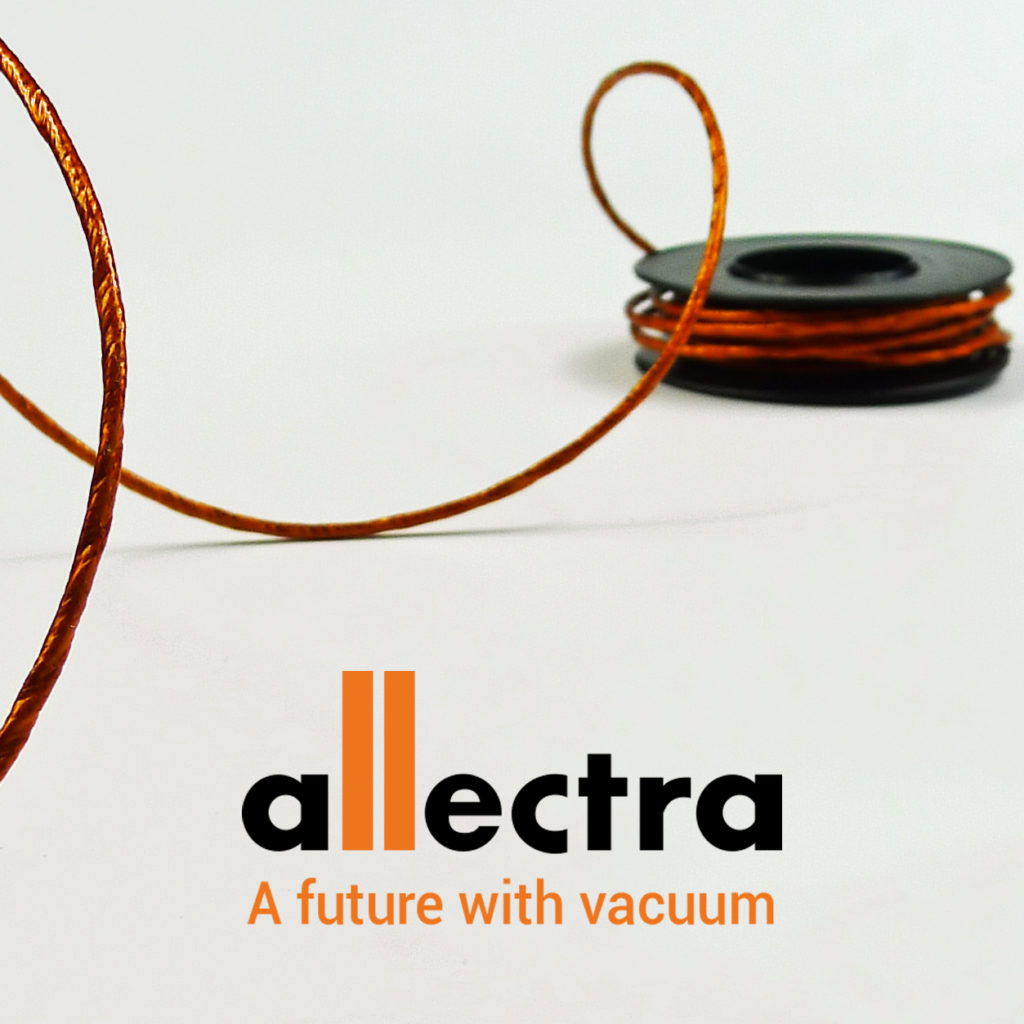Whether in the semiconductor manufacturing industry or in research fields such as surface science or materials science, insulated wires are ubiquitous. In high vacuum and ultra-high vacuum (HV/UHV), they are used for instance for powering high-technology electronics, connecting instrumentation and motion elements, and coupling signals to and from detectors. The stringent measurement and experimental criteria placed on these wires include higher stability, limited outgassing, high-temperature compatibility, and more. For the most demanding operating conditions, manufacturers recommend Kapton wires.
With a notably low thermal conductivity (W/mK) even at extreme temperatures, exceptional thermomechanical stability, and limited outgassing, Kapton-insulated wires are ideal for demanding HV/UHV applications. This post will outline the Kapton wires available from Allectra in more detail.

HV/UHV: Why Use Kapton Wires?
Electronic processes in HV/UHV systems require wiring harnesses that retain their distinct electronic/dielectric properties at pressure regimes below 10-9 mbar. The insulation must exhibit low thermal conductivity at extreme temperatures to protect the integrity of the internal conductor.
Kapton is a proprietary polyimide with superior mechanical stability across an extremely wide temperature range; approximately -269 – +400°C (-452 – +752°F). This comes courtesy of a low thermal conductivity which enables it to retain its shape in low and high processing temperatures alike. When used in wiring, Kapton typically sheaths silver-plated copper conductors of various diameters which may be subject to current/voltage fluctuations in response to thermally-induced physical variations. Insulating these single or multistrand wires with high-performance Kapton ensures a strong and stable electrical supply throughout processing in applications as extreme as cryogenics and HV/UHV thermal processing.
Kapton wires are also widely implemented in HV/UHV processes due to their low outgassing rates, which ensure vacuum integrity is not compromised by the release of gaseous species from polymeric wire sheaths.
Degradation of wiring due to thermal deformation or radiation damage can cause any number of faults that can inhibit process yields or results accuracy. The solution to this issue is compounding the highest quality conductor materials with high-performance insulation and testing the product to ensure vacuum compatibility. Kapton wires regularly meet these stringent parameters. However, until now one draw-back was that Kapton-insulated wires were unable to resist radiation damage which can come from various sources such as infrared (IR), electron beams, x-ray, etc.
This drawback has recently been resolved by the introduction of Allectra’s new range of radiation-resistant Kapton-insulated wires, KAP301.
Kapton Wires from Allectra
Allectra recently expanded their broad range of Kapton-insulated wires to include the new multi-stranded radiation-resistant KAP301. Allectra’s unique KAP301 Kapton wires have been tested for high voltage performance at various temperatures, controlling for vacuum compatibility during radiation exposure. The results demonstrated the long-term performance of Allectra Kapton wires in a temperature range from -269°C (4Kelvin) up to 300°C and radiation resistance of 109 Rad = 107 Gy.

The Allectra KAP301 range includes Multistrand wire 0.25mm diameter, 0.35mm diameter and 0.6mm diameter as well as coaxial wire, Thermocouple wire, type K and N and Twisted Pair cable screened with outer insulation.
If you need any more information about Allectra’s Kapton wires, simply contact a member of the team today, or shop online for KAP301.
*Kapton is a registered trademark of DuPont
